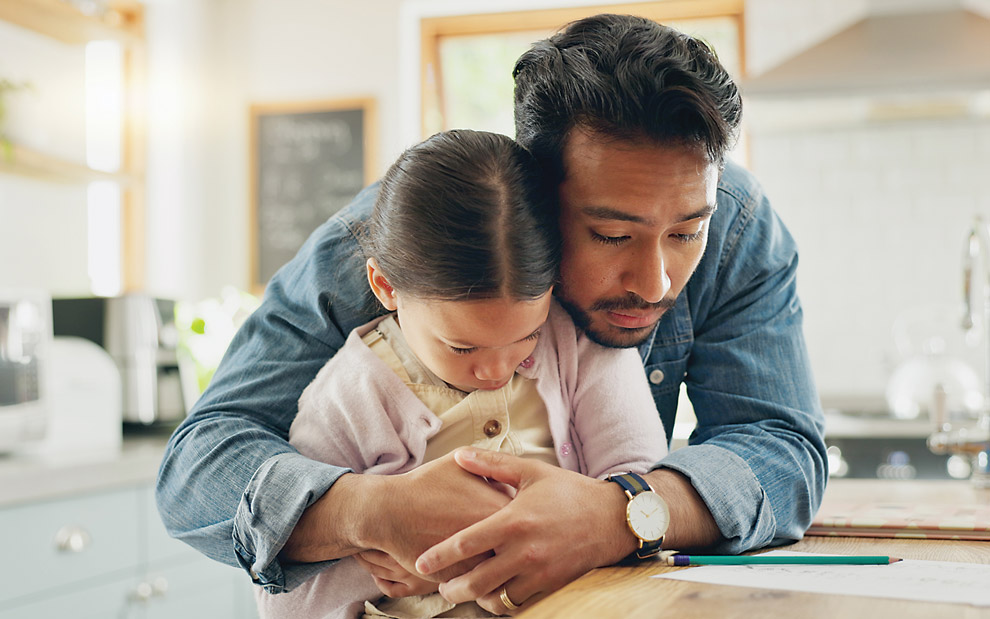Q.
My partner and I have very different experiences of discipline from our childhoods. What do you think about the time-out for younger kids?
A.
Before responding to your specific discipline question, I think it would be helpful to explore what discipline is and our goals for disciplining our children. In the context of family life, discipline is about teaching, guiding, and supporting the development of our children. Our individual approaches to discipline may differ, but most parents share the goal of raising children who demonstrate positive behaviors at home and at school; who develop strong, mutually satisfying relationships; and who experience success in their endeavors.
Discipline is often thought of by parents as the tools or strategies used to promote positive behaviors and deter children from challenging ones – like hurting others, not caring for their surroundings, or pushing boundaries put in place for their own safety. However, an exploration of tools for discipline (like time-out) is futile without focusing first on the parent-child relationship. The quality and strength of the parent-child relationship (or attachment) is the foundation for supporting our children in learning and developing the tools to be successful. Time spent strengthening the attachment between parent and child is like preventative care for negative behaviors, meltdowns, and tantrums. Because the quality of the parent-child relationship is foundational for discipline, we want to be sure that we are engaging in discipline practices that promote connection with our children and nurture a strong bond. Children who feel connected to their caregivers are better equipped to manage big feelings and therefore, their behaviors.
What’s the difference between discipline and punishment?
Let’s explore the concept of punishment a bit. Time-out is a punishment selected by many parents as a tool for correcting behavior or promoting positive behavior. Time-out is seen by many as a more positive solution; however, relying on punishment as a primary tool in our discipline strategy can leave parents and children feeling frustrated and misunderstood. Punishment-based discipline operates on the premise that children will improve behavior when met with negative consequences (such as being placed in time-out for a few minutes by a parent).
Let’s consider how we approach a child who is struggling with learning to read. Would we use punishment when they sounded the words out incorrectly to improve their reading? Probably not, as we understand with skill development that children need guidance, practice, and support to learn new things. Just as children are born not knowing how to read, children are born not knowing how to regulate their emotional states. Children are born with all of the feelings but none of the skills to manage them. Underneath all challenging behaviors, tantrums, meltdowns, and instances of disobedience is a child experiencing dysregulation. A child builds emotional regulation skills over time in relationships with parents and caregivers who provide consistent opportunities for co-regulation. In co-regulation, caregivers use their own nervous system to calm the nervous system of an emotionally overwhelmed child. This is done through using a warm and soothing tone of voice, providing comfort, validating feelings, and ensuring the child’s safety in the midst of their own big feelings. Over time, co-regulation is internalized by the child, and this is the primary mechanism for the child’s development of self-regulation. Caregivers can also support the development of emotion regulation by helping young children identify and understand their feelings and develop coping skills to use when they are feeling overwhelmed.
How about the time-out?
So, let’s go back to time-out specifically. Time-out, when used as a punishment, can potentially miss important moments of co-regulation and emotion regulation skill development in young children. Time sitting alone without a caregiver (a disconnected experience) can leave a child alone with big feelings and without an opportunity to develop the kinds of skills needed to prevent tantrums in the future. Quick side note: tantrums are normal! They are developmentally appropriate and generally disappear after age five or six. Instead of a time-out, you may consider trying a time-in. You can think of this as a moment following the big behavior where you sit at your child’s level and offer connection and soothing. Your comments should be brief, something like “This is hard,” “I am right here with you,” or “You are safe with me.” You may model slow breathing, use sensory tools (white noise, snuggly blanket) to bring about calm, or offer physical touch and comfort.
Once a child begins to calm, you can support them in labeling the emotional experience underlying the behavior. For example, “You were really mad when I said no to TV.” It is important to reinforce boundaries or limits you set, and at the same time allow your child to have their own feelings about them. It is your job as the parent to set limits, and it is your child’s job to have reactions and learn ways (over time) to cope with these reactions. You might say, “I get it, it’s hard to hear no. You can be mad, and it is my job to make decisions that are best for you even when you may not like it.” Once a child is calm (and this may be even a day later), you can also practice tools or behaviors that they need more help with. For example, you can role play saying “no” and have your child rehearse ways to cope with the angry feelings she may experience as a result.
While I do not recommend time-out, or any punishments, as a primary form of discipline, sometimes it is necessary for a parent to take time to calm their body before doing this co-regulation with a child. It is important to take space to ground yourself, say out loud, “My child is a good child, they are doing the best they can, my child is having a hard time,” or “I am safe, I can handle this hard moment with my child, it’s normal for kids to have really tough moments.” Being present and offering connection to a child who is struggling requires that we first check in with our own level of regulation.
How to achieve a calmer parenting style
If you are a parent or caregiver who has a system of using a lot of punishments, or from time to time blurts out punishments or threats in moments of anger, welcome to the club! Parents are human beings, and the good news is children can benefit from our mistakes when we respond to those mistakes as opportunities for repair. Repairing with your child after a tough moment may look something like sitting quietly with them and acknowledging your mistake, apologizing, and letting them know you are working at improving how you handle big feelings and what happened was not their fault. This is not a license for us to lack control over our emotional state with our kids, but rather a reminder for us to be kind to ourselves when we are working really hard at this discipline business and still have moments when we lose our cool – because most or all of us do!
What I can tell for sure from your question is that you are a parent who is intentional and thoughtful about the way you care for your child. Reflecting on a discipline approach and even writing your own parenting mission statement can provide support in difficult moments and can help you remain clear about your “why” for working through challenging behaviors with empathy and connection.





